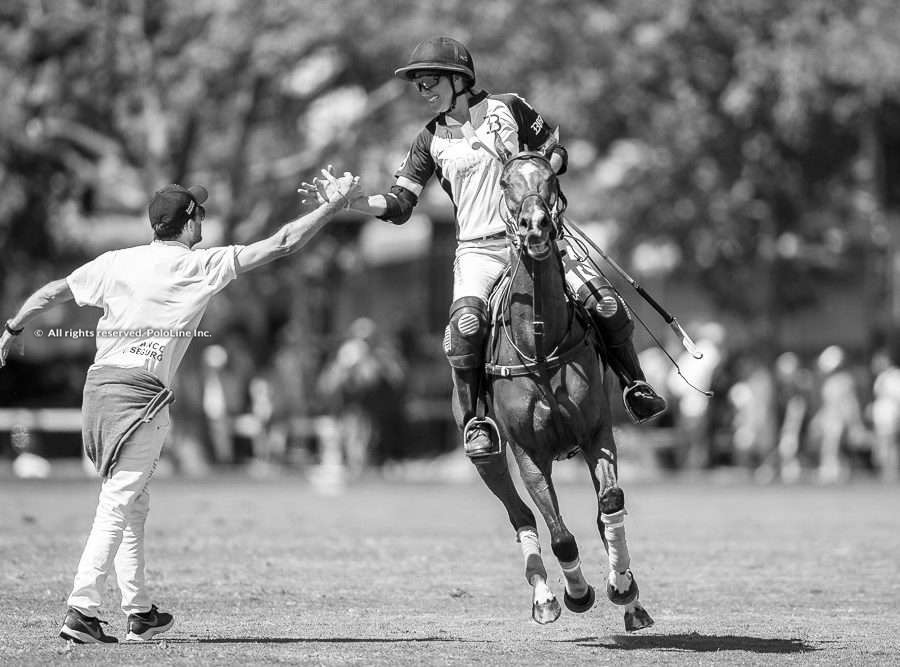Nina Clarkin is one of the leading female polo professionals in the world. The English player, rated at 10-goals, comes from a traditional polo family: the Vesteys. She has won numerous tournaments around the world and has been a trailblazer for many young women coming into the sport. Nina shares her passion for polo and horses with her husband, New Zealander John Paul Clarkin. In dialogue with Pololine, Nina spoke about all things horses.
Can you describe your perfect polo horse?
My perfect polo horse has to be agile, and have a soft mouth. They need to be very fast, but they also need to be able to stop in an instant.
What is the most important quality a polo horse should have?
I think it is crucial for them to have a good disposition. That they want to play polo; that they enjoy it.
What is your ideal number of horses for a string?
You can never have too many! No, seriously speaking, the ideal number for me to play in England is between eight and ten horses.
On average, how many new horses should one have coming into a string each season?
I have a very small breeding operation in England, so in my case one horse enters my string each year.
What is the most important stage in the training of a horse?
Every stage is important. The key thing is to surround yourself with people who know how to do the work. When it comes to breaking a horse in, it is best to take things easy and not rush the horse.
Which is, or has been, the best polo pony you have ever seen play, and why?
I would say that the best mare I have ever seen is Dolfina Cuartetera. She has everything I like about a horse.
Which is or has been your favourite horse and why?
My favourite horse is a difficult one!! At the moment is Bazil who is a home bred and I like to play him first and last. Jess I only had for a few years but she was fantastic. And Polaca was the best horse I ever had when I was younger (she was in my string when we won the Gold Cup).
Of the horses you saw play, is there one in particular that you would like to try?
I would like to play Dolfina Cuartetera, without a doubt.
